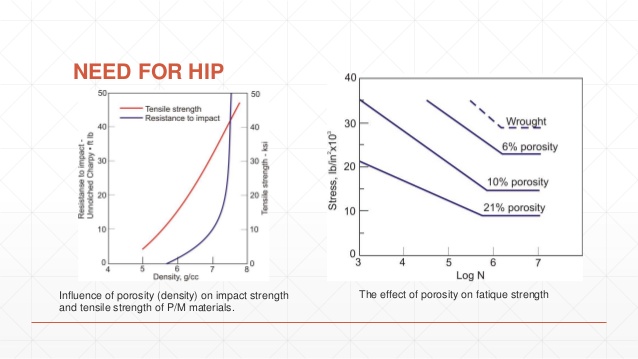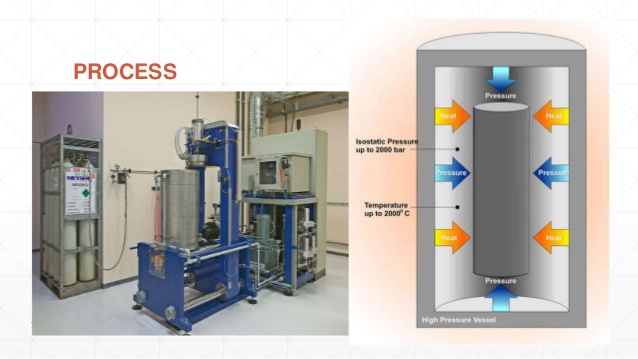The hot isostatic pressing technique, often incorrectly called “hippatura”, is a production process developed since the ’70s and entered progressively in many industrial sectors, to reduce the porosity of metal aggregates and increase the density of many ceramic materials, with benefits in terms of increased resilience, fatigue behavior and workability.
The main use of the HIP process is therefore to increase the density of the material (for the purposes and objectives for which this requirement is important) and the strength and structural reliability of the component.
The HIP process consists in placing an object in a gaseous environment at a high temperature and high isostatic pressure. The gas most frequently used for the purpose is the Argon, that does not react chemically with the material. While the chamber is placed in temperature, the gas pressure is progressively increased in the autoclave so as to act uniformly on all surfaces, from which the term “isostatic”.

Metal powders can be solidified and densified with this method, with gas pressures of up to a few hundred MPa and temperatures up to 2.000°C. When the material is subjected to HIP, micro-porosity are eliminated through the combination of different mechanisms such as plastic deformation, creep and diffusion bonding. Micro-fractures are also reduced, metal powder, ceramic composites and metallic coatings (metal cladding) are consolidated.
The HIP process is used after sintering and for the manufacture of metal matrix composite (MMC). Its use has being progressively associated with Additive Manufacturing as a phase of post-processing, for all those applications in which a particular fatigue strength of the finished component is required (e.g. aerospace).

(courtesy: Qebec Metallurgical Lab, Canada)




